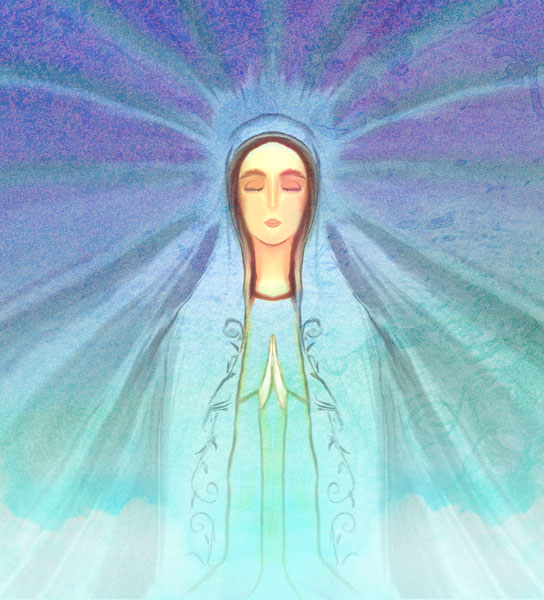Antarctica, which contains the South Pole, is the Earth's fifth largest and least populated continent with no permanent residents, averaging 1,000 in winter and 5,000 in summer. Some 98% of the continent is covered by ice. And yet, visitors to this inhospitable land will find a place to honor the Blessed Virgin Mary – the Chapel of Santa Maria Reina de Paz (Queen of Peace), built out of metal storage containers and located on the Chilean military base of King George's Island, Antarctica.
The chapel serves an average population of 100 and signifies the great love and devotion to Mary, as the Mother of God, that exists in even the most unexpected places. It stands in contrast to the Basilica of The National Shrine of Our Lady of Aparecida, Brazil, one of the largest churches in the world and one of an inestimable number dedicated to Mary under any one of her many titles.
Mary's titles stem from her relationship with Jesus, humanity, and the Church. Some titles are attributed to first use by saints, as in Mary Help of Christians, by St. John Chrysostom, and Stella Maris, Star of the Sea, by St. Jerome. Others arise from pious tradition or the geographic locations of the faithful.
In addition to Mary's many titles are the many faces of Mary, commemorated in thousands of Catholic churches and cathedrals around the world. Prominent in the United States is the Basilica of the National Shrine of the Immaculate Conception in Washington, which houses more than 80 chapels and oratories honoring the Mother of God and representing people from every corner of the globe.
 Among the Basilica representations of Mary are those that depict her as African, Austrian, Chinese, Cuban, Czech, Filipino, French, German, Guamanian, Hungarian, Indian, Irish, Italian, Korean, Latin American, Lebanese, Maltese, Polish, Slovakian, Slovenian and Vietnamese.
Among the Basilica representations of Mary are those that depict her as African, Austrian, Chinese, Cuban, Czech, Filipino, French, German, Guamanian, Hungarian, Indian, Irish, Italian, Korean, Latin American, Lebanese, Maltese, Polish, Slovakian, Slovenian and Vietnamese.
Students are most likely familiar with images of Mary with light skin and hair and blue eyes or a young Jewish girl with olive skin, brown hair, and eyes. They may also be familiar with images of Our Lady of Guadalupe, in which Mary appears as an Indian princess, or as Our Lady of Kibeho, a Madonna with black skin who spoke with schoolgirls in a small Rwandan town in Africa.
The Marian month of May is an excellent time to introduce students to some of the many other faces of Mary, helping them understand the diversity and universality of the Catholic Church.
Display varying images of Mary in the classroom. Be sure to tell the students the title of the image and the origins. Use the various images for prayer during May.
Encourage students to share their cultural images of Mary. Invite them to draw an image of Mary that means the most to them and encourage them to share any Marian traditions they may celebrate at home with the class.
Whether you are teaching a pre-school program, elementary, or high school program, be sure to pay attention to the artwork in your RCL Benziger resources for beautiful and unique images of Mary, as well as in Our Family Devotions, Popular Devotions from Around the World, which includes several different Marian devotions.
Also, check out Our Family Prays, Catholic Prayers and Traditions for Adorning an Image of the Blessed Virgin Mary.
 About the Author
About the AuthorMary Regina Morrell, mother of six and grandmother to nine, is a Catholic journalist, author, and syndicated columnist who has served the dioceses of Metuchen and Trenton, New Jersey, and RENEW International in the areas of catechesis and communication.
Family Life Second Edition is the new edition of RCL Benziger's leading Catholic morality education program that addresses key concerns of today's Catholic families.
- Family LifeIncludes child safety education in every grade level.
- Promotes virtuous living
- Strengthens Catholic identity.
RCL Benziger's Family Life program continues to be adaptable and flexible to supplement any school's religious education program.
